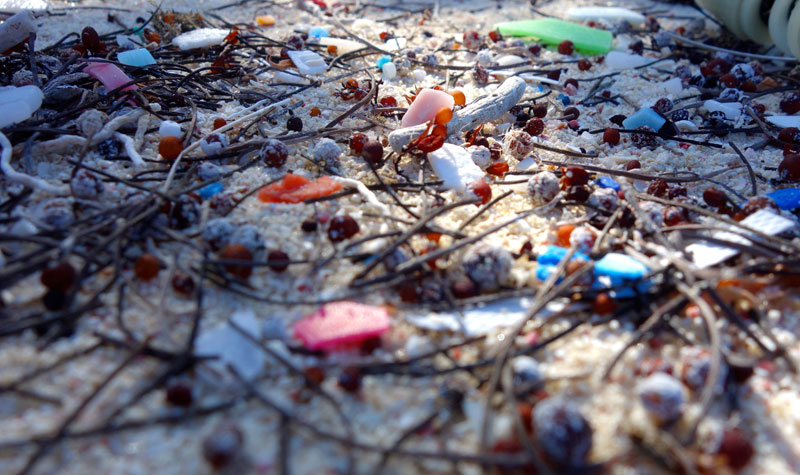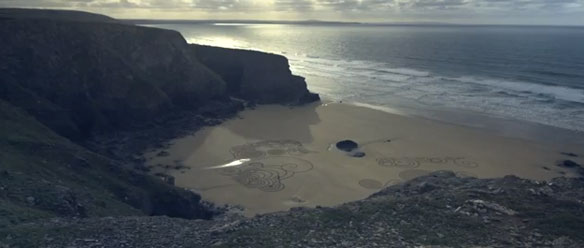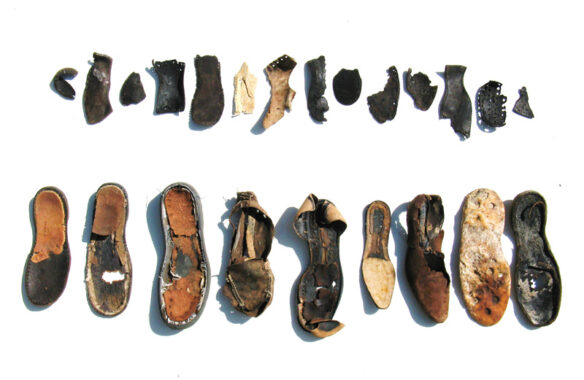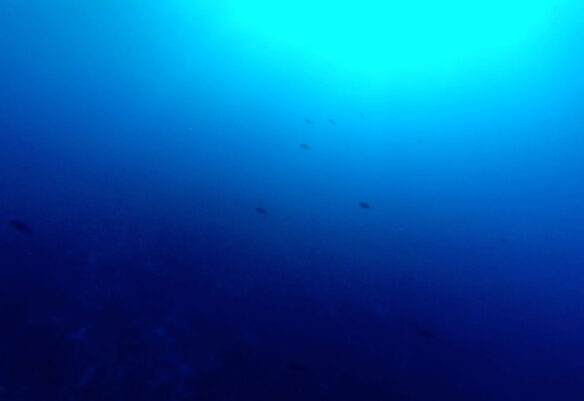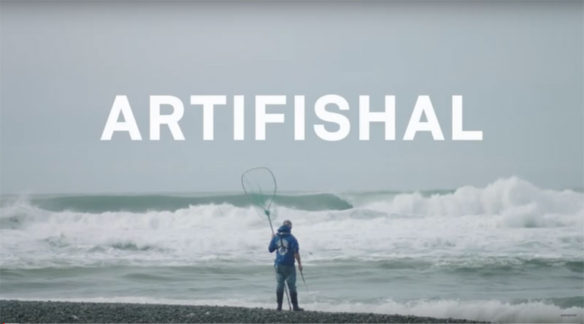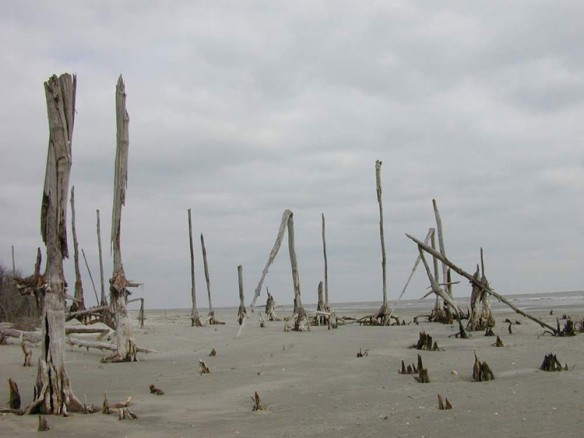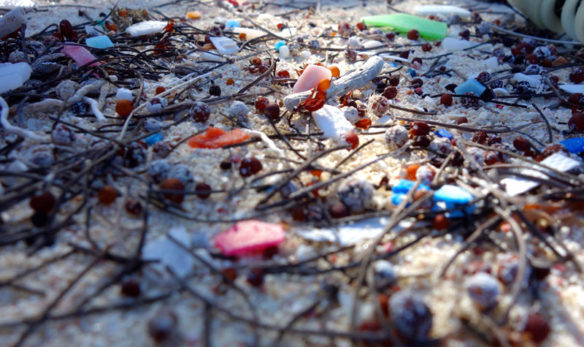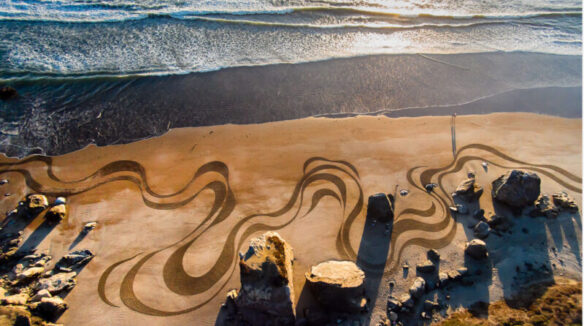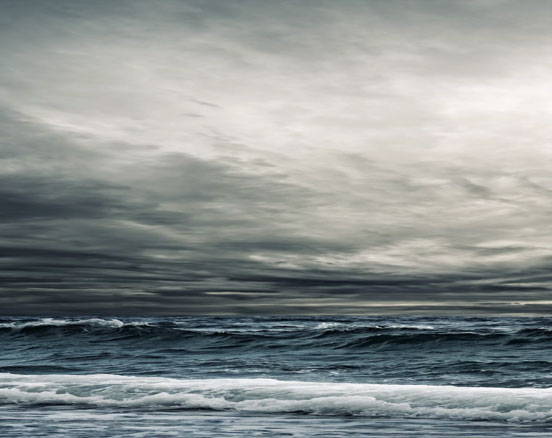“The unprecedented plastic waste tide plaguing our oceans and shores, can become as limited as our chosen relationship with plastics, which involves a dramatic behavioral change on our part…” Captions and Photo: © SAF — Coastal Care
Excerpts:
Designer Brodie Neill has created a contemporary hourglass filled with microplastic instead of sand to highlight the issue of ocean plastic pollution. The Capsule hourglass, which is filled with microplastic collected by Neill from beaches in Tasmania where he grew up, is an open-edition piece… Read Full Article; Dezeen (04-07-2019) Brodie Neill showcases his “ocean terrazzo” with waterfall installation; Dezeen (09-16-2018) Designer Brodie Neill has worked with recycled ocean plastic to produce new furniture pieces, and used them to create a waterfall installation in a London hotel. It is intended to encourage people to think more carefully about how they contribute to the vast global consumption of plastics… Microplastic pollution revealed ‘absolutely everywhere’ by new research; Guardian UK (03-06-2019) Microplastic pollution spans the world, according to new studies. Humans are known to consume the tiny plastic particles via food and water, but the possible health effects on people and ecosystems have yet to be determined… Trillions of Plastic Bits, Swept Up by Current, Are Littering Arctic Waters; The New York Times (04-19-2017) Microplastic pollution in oceans is far worse than feared, say scientists; Guardian UK (03-12-2018) Microplastics pollute most remote and uncharted areas of the ocean; Guardian UK (02-12-2018) First data ever gathered from extremely remote area of the South Indian Ocean has a surprisingly high volume of plastic particles, say scientists. Currently scientists can only account for 1% of the plastic they think is in the ocean… Video captures moment plastic enters food chain, BBC News (03-11-2017) A scientist has filmed the moment plastic microfibre is ingested by plankton, illustrating how the material is affecting life beneath the waves. The footage shows one way that plastic waste could be entering the marine and global food chain… People may be breathing in microplastics, health expert warns; Guardian UK (05-10-2016) People could be breathing in microparticles of plastic, according to a leading environmental health expert, with as yet unknown consequences on health… Plastic Pollution: When The Mermaids Cry, The Great Plastic Tide, Coastal Care Washed out on our coasts in obvious and clearly visible form, the plastic pollution spectacle blatantly unveiling on our beaches is only the prelude of the greater story that unfolded further away in the world’s oceans, yet mostly originating from where we stand: the land… The sands of time; The New York Times (12-15-2017) Human intervention to control beach depth is often futile. Repeated studies have found that sand pumped onto beaches in order to protect coastal property may be washed out by a storm or two. These beaches commonly lose all the new sand in five years or so… Sand, Rarer Than One Thinks: A UNEP report (GEA-March 2014) Despite the colossal quantities of sand and gravel being used, our increasing dependence on them and the significant impact that their extraction has on the environment, this issue has been mostly ignored by policy makers and remains largely unknown by the general public. In March 2014 The United Nations released its first Report about sand mining. “Sand Wars” film documentary by Denis Delestrac – first broadcasted on the european Arte Channel, May 28th, 2013, where it became the highest rated documentary for 2013 – expressly inspired the United Nations Environment Programme (UNEP) to publish this 2014-Global Environmental Alert. Sand Wars, An Investigation Documentary, By Award-Winning Filmmaker Denis Delestrac (©-2013) “Sand is the second most consumed natural resource, after water. The construction-building industry is by far the largest consumer of this finite resource. The traditional building of one average-sized house requires 200 tons of sand; a hospital requires 3,000 tons of sand; each kilometer of highway built requires 30,000 tons of sand… A nuclear plant, a staggering 12 million tons of sand…”—Denis Delestrac -(©-2013)
